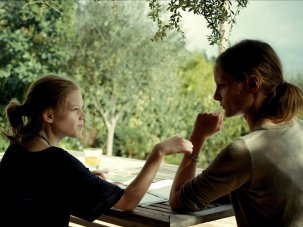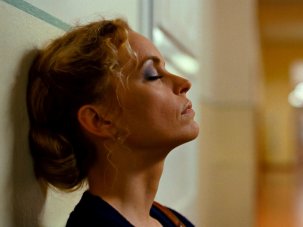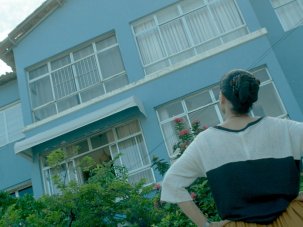from our November 2013 issue
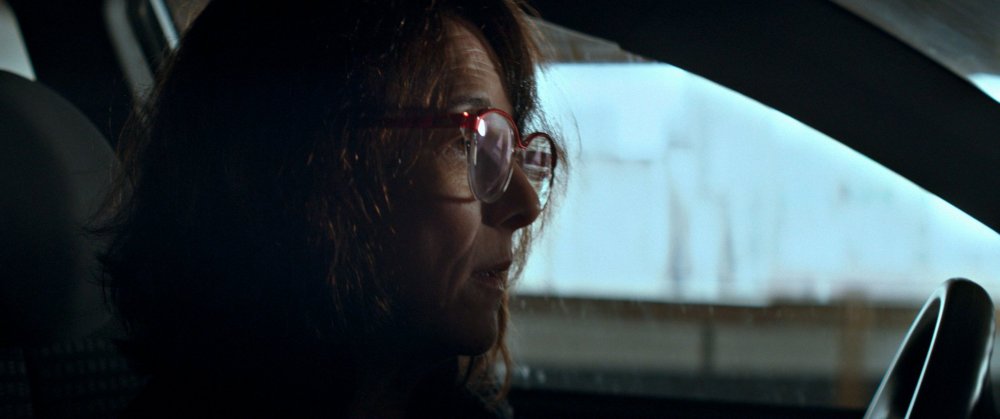
The first time the viewer sees Paulina García’s Gloria at the bar of a crowded nightclub for middle-aged singles, the sound of Frecuencia Mod’s upbeat ‘Duele, duele tu amor’ (‘Your Love Hurts’) rings out. With a glass of pisco sour in her hand and her arm positioned confidently on the bar, she casts her eye around the room and then swings purposefully across the dance floor to introduce herself to a potential new partner as Donna Summer’s ‘I Feel Love’ resonates across the room. The sonic commentary offered by the two opening numbers sets the scene for Sebastián Lelio’s perceptive and entertaining study of a feisty, free-spirited 58-year-old divorcee, putting aside the pain of past relationships in her search for passion, companionship and a partner who shares her zeal for dance.
Chile/Spain 2012
Certificate 15 109m 11s
Director Sebastián Lelio
Cast
Gloria Cumplido Paulina García
Rodolfo Fernández Sergio Hernández
Pedro Diego Fonecilla
Ana Fabiola Zamora
Luz Coca Guazzini
Hugo Hugo Moraga
Gabriel Alejandro Goic
Flavia Liliana García
Maria Antonia Santa Maria
Nana Luz Jiménez
Marcial Marcial Tagle
[2.35:1]
Subtitles
Distributor Network Releasing
UK release date 1 November 2013
Gloria’s early scenes are framed against a series of torch-song numbers that both comment on the action and complement the snippets of exposition revealed by Gloria’s encounters and conversations. Divorced for over a decade, she lives in a small apartment where she suffers upstairs neighbours – it is never clear if it is a single disturbed neighbour or a warring couple – arguing noisily late into the night. She leaves buoyant messages for her grown-up daughter Ana (Fabiola Zamora) and son Pedro (Diego Fontecilla), reminding them to call her – the implication being that she hears from them less than she would like.
Gloria is single and lonely but refuses to give up. She croons along in the car to Massiel’s ‘Eres’ (‘You Are’) as she drives to work. The lyrics – “You are the response I couldn’t find in my silence… You are my king” – point to the traditional relationship model she’s searching for. The plethora of songs and music that underscore the film’s action, from the melancholy of Bach’s Partita in D minor for solo violin to Paloma San Basilio’s ‘Libre’, position Gloria’s adventures within a litany of tales of emotional survival in the aftermath of romantic heartbreak.
Gloria is surrounded by a number of less than perfect relationships. “Are you going to tell me what to do?” thunders one of her neighbours to the other, ominously. Her son Pedro responds in an acerbic tone to the absent mother of his small child when she rings home. Her ex-husband Gabriel (Alejandro Goic) evidently has a strained relationship with his daughter – he is the last to know that she is expecting her Swedish boyfriend’s baby.
And yet the film seems to suggest that Gloria’s family dynamics are no more problematic than those experienced by other characters in the film. The recently divorced Rodolfo (Sergio Hernández), the retired naval officer Gloria begins a relationship with, has two grown-up daughters who appear utterly dependent on him. When Gloria brings him along to meet her family at Pedro’s birthday dinner, Rodolfo sheepishly reveals that his daughters never graduated, have no employment and still live at home. Indeed, on many levels Gloria enjoys a good relationship with her children: she visits her son and helps with his sick baby; and when she drives Ana to Santiago airport to catch a plane to join her boyfriend in Sweden, Ana appears genuinely distraught at parting from her.
The film’s pulse comes in many ways from García’s brave and beautiful central performance. She dominates the movie from the very beginning as the camera picks her out in the swarming disco. She is present in every frame and Lelio shapes the film to ensure that the viewer is given the sense of entering her world, sharing the front seat of her car as she drives to work and the intimacy of her lovemaking scenes with Rodolfo.
Her large round glasses frame slanting, expressive eyes and heavy lids noticeably dressed up with eye shadow; her flicked-back hair has something of a 1970s feel. García exudes the humanity of Carmen Maura’s genial Pepa in Almodóvar’s Women on the Verge of a Nervous Breakdown (1988), with the sexual energy of Diane Keaton’s Theresa Dunn in Richard Brooks’s Looking for Mr Goodbar (1977). Her positive outlook and willingness to try anything – including bungee jumping and marijuana – generate Rodolfo’s pick-up line: “Are you always this happy?”
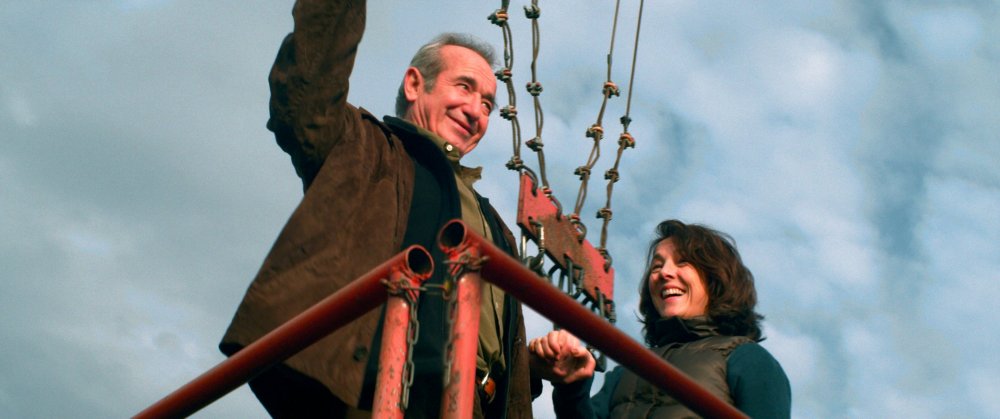
Gloria and Rodolfo’s sexual encounters are marked by the sight of flabby flesh and the sounds of slobbering kisses and heavy breathing. Gloria is a film about ageing and the management of change: Rodolfo has had a gastric bypass to deal with obesity but can’t handle his sagging waistline. He constricts himself within a girdle – a potent metaphor for his own emotional imprisonment – which Gloria rips off with a glorious sense of purpose. Gloria herself is diagnosed with glaucoma and must take action to avoid going blind.
The film’s strength is that it operates both as a compelling character study of an alluring, humane protagonist whose fragility and resourcefulness sit side by side, and as a wider contemplation of the state of the nation, without the latter dimension ever appearing forced or imposed. There are scenes of protests on the TV as Gloria chats on the telephone at home, testifying to the wider turmoil besetting Santiago; she is framed by crowds of protesters carrying placards as she leaves a city café; and at a dinner party she bemoans the cost of medical treatment while her friend describes Chile as a ghost nation. Like Gloria and Rodolfo, the country is managing transition, from the lasting infrastructures of a dying dictatorship to a more pliable democratic model.
But whereas Gloria is determined to move forward and let her children live their own lives, Rodolfo is trapped by a past that he can’t (and perhaps doesn’t even want to) let go. The fact that his adult daughters rely on him financially and emotionally is perhaps a comment on a generation who grew up in the shadow of a dictatorship that would not let them make decisions for themselves. Rodolfo seems content to let this culture of dependency continue, to the detriment of his relationship with Gloria.
Hernández imbues Rodolfo with childish attributes: pleading eyes, overblown declarations of devotion, a petulant inability to deal with not being the centre of attention. He takes Gloria paintballing on their first date. “Men like to play war,” he informs her in a telling indictment of the macho culture that spawned and cocooned the Pinochet regime. The disclosure of Rodolfo’s military past leads to an awkward silence at Pedro’s birthday dinner. “Who is this man?” asks Ana after his embarrassing silent departure.
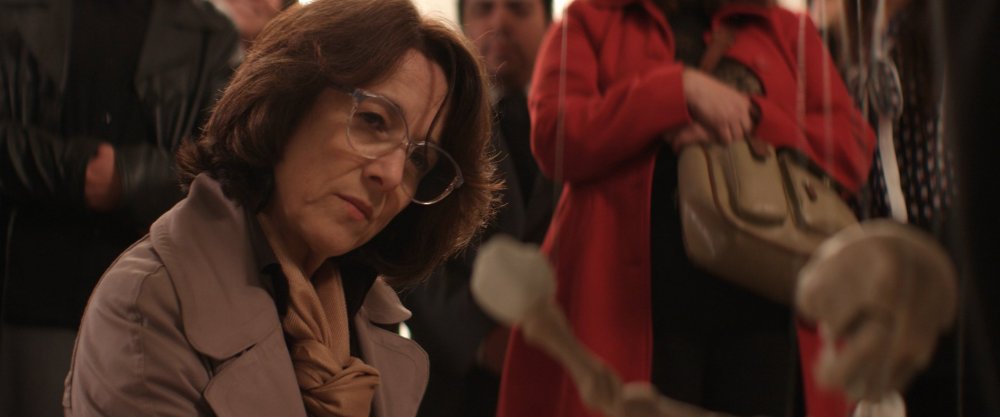
There is an admirable visual economy to Gloria. The central protagonist’s emotional state emerges not only through the music, which works, the director has said, “almost like a Greek chorus”, but also through image association: a dancing skeleton in a shopping arcade embodies both Gloria’s sense of mortality and her lissom energy; the use of Mahler’s Adagietto from his Fifth Symphony as she sits at the hairdressers with her hair sculpted in tight curls suggests a parallel with the ageing Aschenbach in Visconti’s Death in Venice (1971).
At the end of the film, Gloria embarks on a spring clean, hoovering her car (and by association her life) of unnecessary clutter. She returns Rodolfo’s paintballing guns with a flourish: dressed in black dress, heels and a red sequined bolero jacket, she fires green paint across both Rodolfo and his house while his overweight daughters rush like giant toddlers to his aid – a playful reference to Women on the Verge.
In the final sequence she styles her hair in the mirror, cigarette in mouth, creating a new look for herself. Singing along to Umberto Tozzi’s ‘Gloria’ at a wedding party, she refuses an invitation to dance and subsequently takes to the floor at her own rhythm. Her style is all her own: passionate, fearless, determined and, like Lelio’s film, eloquently uplifting.
-
Sight & Sound: the November 2013 issue

In this issue: Gothic cinema from Universal to Hammer to Twilight – plus The Selfish Giant, Philomena, Captain Phillips and the peak of silent...
-
The Digital Edition and Archive quick link
Log in here to your digital edition and archive subscription, take a look at the packages on offer and buy a subscription.




